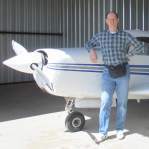-
Posts
140 -
Joined
-
Last visited

zaitcev replied to Trenta's topic in General Mooney Talk

zaitcev replied to PeteMc's topic in Mooney Safety & Accident Discussion

zaitcev replied to 1964-M20E's topic in Miscellaneous Aviation Talk

zaitcev replied to 1964-M20E's topic in Miscellaneous Aviation Talk
We have placed cookies on your device to help make this website better. You can adjust your cookie settings, otherwise we'll assume you're okay to continue.